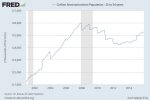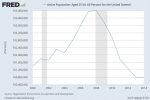- Joined
- Jun 30, 2015
- Messages
- 13,914
- Reaction score
- 4,086
- Location
- Oregon
- Gender
- Male
- Political Leaning
- Progressive
- You are right. There is a large set of problems that occur, when societies shrink.
- Imagine what you want, but I have read a good number of studies for different countries, for different economic situations, for different levels of development, for varying levels of income and distribution and comparative studies by as different organizations as Harvard, OECD, World Bank, EU or you name it. And yes, there are situations in which it is better to increase spending. But those are really not the general case in OECD type economies.
You're being coy. You can either actually identify some of these sources or take it that you've limited yourself entirely to what could generally be called "von misean" voodoo economics, particularly popular with libertarians. This economic theory is based entirely on an ideology. They have no actual real-world, either historical or current, examples that would support their claims. It's more of a religious belief than an economic discipline.
Last edited:


